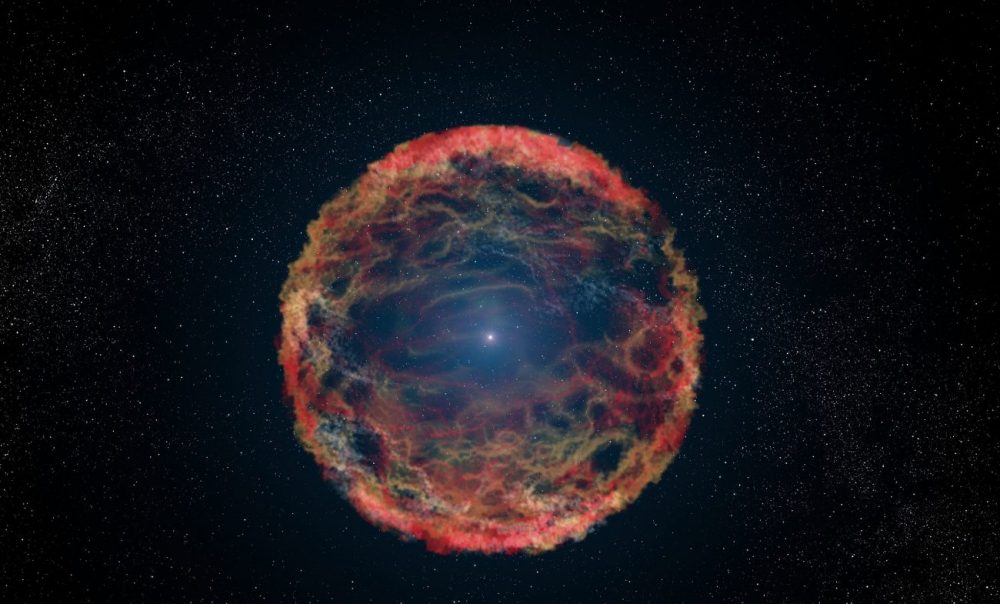Researchers consider whether supernovae killed off large ocean animals at dawn of Pleistocene.
The Enigmatic Cycle of Mass Extinctions
Earth’s history is marked by a perplexing cycle of mass extinctions, and one such event occurred approximately 2.6 million years ago. A supernova, located about 150 light-years from our planet, produced a strikingly bright light in the prehistoric sky that lingered for weeks or even months. Centuries later, a cosmic energy tsunami from the same star explosion reached Earth, causing dramatic climate change and a massive global extinction event.
New Insights from Astrobiology Research
A recently published paper in Astrobiology delves into the effects of such a supernova on Earth. Adrian Melott, professor emeritus of physics & astronomy at the University of Kansas and lead author of the study, stated that the research is different due to the evidence of specific nearby events.
By examining ancient seabed deposits of iron-60 isotopes, the study provides conclusive evidence of the timing and distance of supernovae. Melott noted that iron-60 is an unmistakable sign of supernovae since it is radioactive and could not have been formed with the Earth.
A Series of Supernovae and the Local Bubble
Melott posited that there may have been a series of supernovae events, with one unusually powerful and close explosion. Co-authors Marinho of Universidade Federal de São Carlos in Brazil and Laura Paulucci of Universidade Federal do ABC also found evidence for a series of supernovae within the architecture of the local universe.
The researchers identified the Local Bubble, a vast region about 300 light-years long filled with hot, low-density gas. Melott explained that a series of supernovae could have created this bubble, causing cosmic rays to bounce off its sides and resulting in a cosmic ray bath lasting between 10,000 and 100,000 years.
Implications for Earth’s Past and Future
This groundbreaking research offers invaluable insights into the ancient cosmic events that have shaped Earth’s history. Understanding the connection between supernovae and mass extinctions can help scientists unravel the mysterious cycle of Earth’s past and potentially provide clues about future cosmic events that may impact our planet.
PLEASE READ: Have something to add? Visit Curiosmos on Facebook. Join the discussion in our mobile Telegram group. Also, follow us on Google News. Interesting in history, mysteries, and more? Visit Ancient Library’s Telegram group and become part of an exclusive group.





